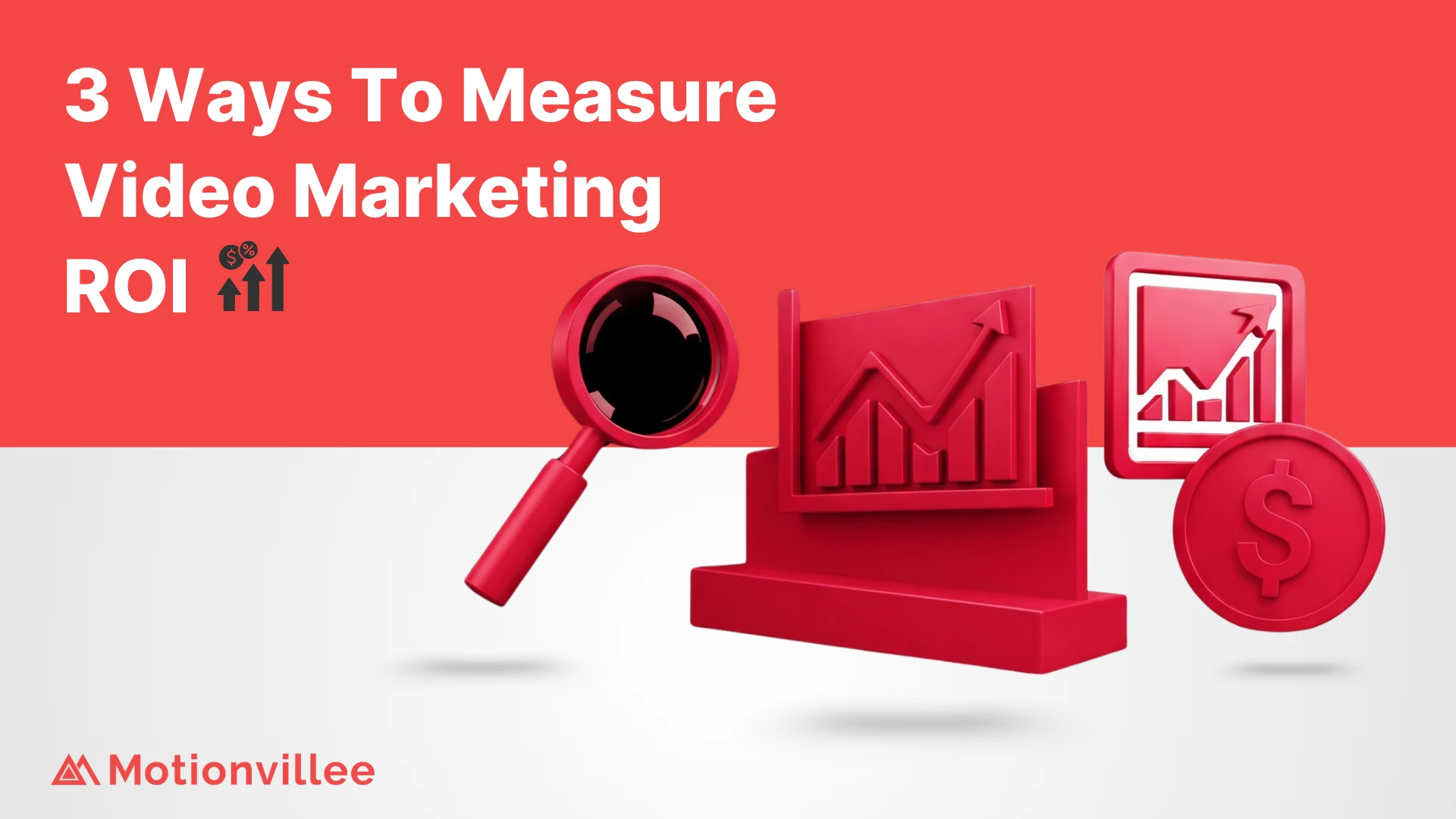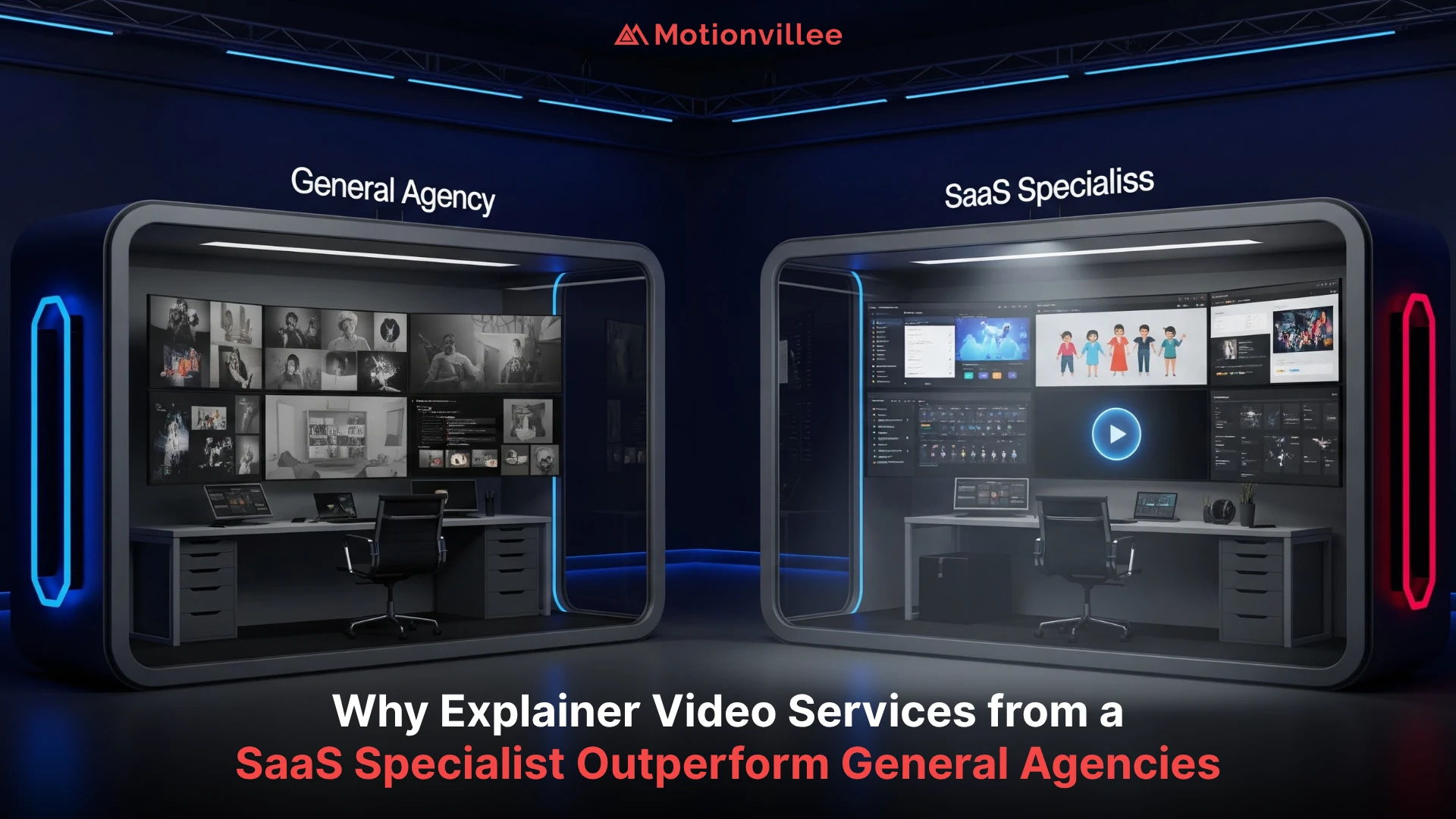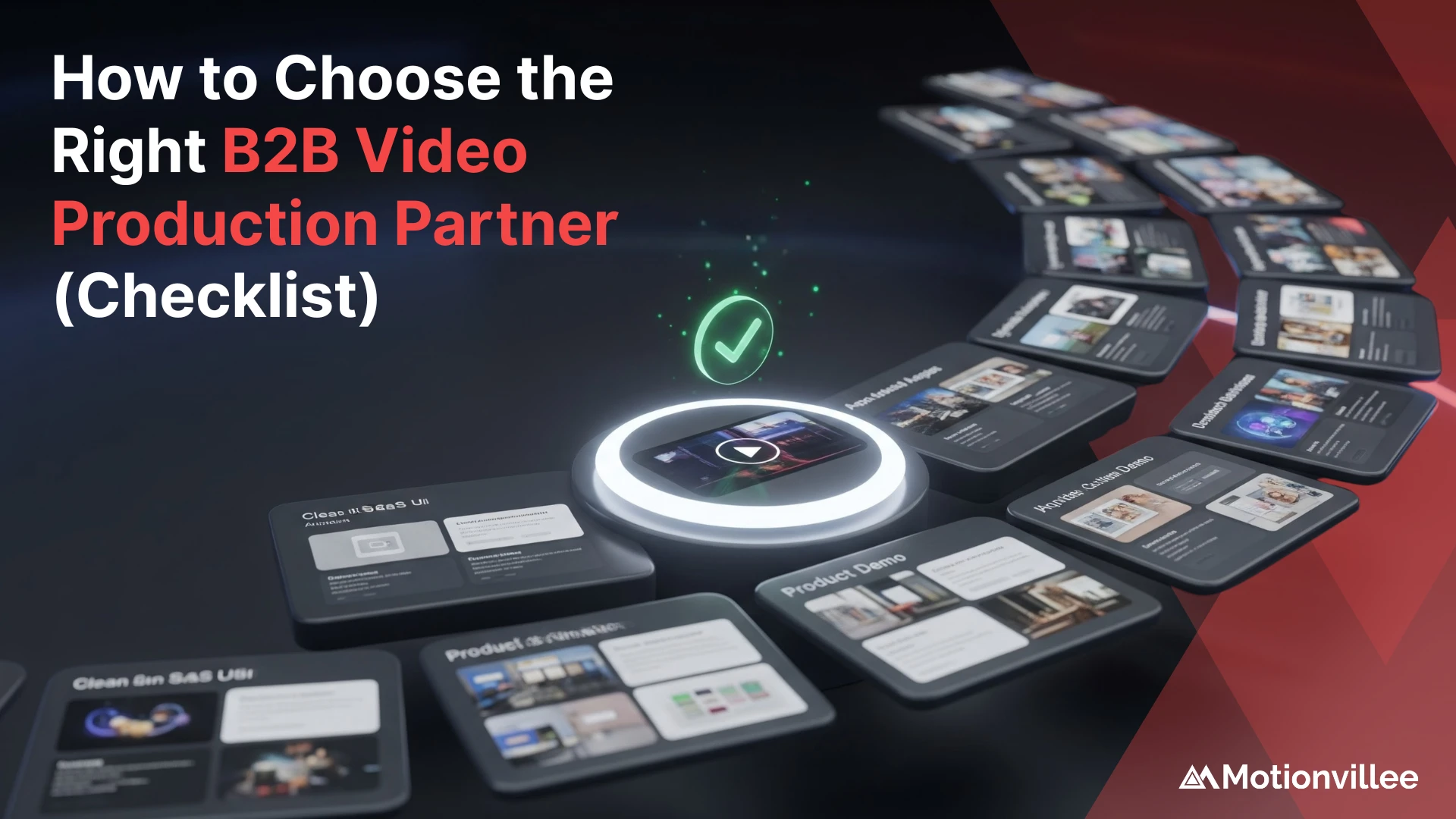Most teams know video works, but few can explain exactly how or why. The pressure to show video marketing ROI is real, especially in B2B where every marketing dollar counts.
The problem is not the format, it is the measurement. Video is often treated like a brand play, when it should be part of your lead generation and sales toolkit.
Here is the good news. You do not need to guess. While ROI will not spike overnight, it can be tracked across:
- Funnel impact
- Conversion performance
- Revenue contribution
In this blog, we will break down three practical ways to measure video ROI. No fluff or vanity views. Just the metrics that matter across awareness, nurture, and close stages.
Whether you are planning a new campaign or evaluating past results, this will give you a clear and simple ROI framework.
Method 1: Track View Engagement at the Top of Funnel
Top-of-funnel videos are not meant to convert directly. Their job is to grab attention and build awareness. To measure their success, focus on how viewers engage, not just how many clicked play.
Use this method for:
- Awareness campaigns
- Brand videos
- LinkedIn or YouTube ads
Key metrics to track:
- View-through rate (VTR) – how many people watched past the 3-second or 25% mark
- Watch time – the average percentage of the video watched
- Cost per view (CPV) – how much you paid per completed or qualifying view
Industry benchmarks to aim for:
- VTR: 15–30%
- CPV: ₹2 to ₹6 (LinkedIn range)
Tools to use:
- LinkedIn Campaign Manager
- YouTube Studio
- GA4 event tracking
Common mistake:
- Do not just celebrate a high view count. Look deeper into how long people are watching and whether the right audience is seeing the video.
This approach gives a clear window into early-stage interest and message relevance.
Method 2: Track Conversions at the Middle of Funnel
Middle-of-funnel videos are where interest turns into intent. These include product demos, explainers, or use-case driven videos on landing pages. The goal here is not just to inform but to move the viewer to action.
Use this method for:
- Product demo videos
- Use-case explainers
- Lead capture landing pages
What to measure:
- Click-through rate (CTR) – how many clicked after watching
- Sign-ups or demo requests – form submissions after viewing
- Cost per lead (CPL) – ad spend divided by conversions
Benchmarks to aim for:
- CTR: 1 to 2%
- CPL: ₹300 to ₹1200 depending on industry
Tools to use:
- HubSpot lead forms
- GA4 events and goals
- Scroll heatmaps or video drop-off tracking
Quick tip:
- Make sure the CTA is relevant to the video’s purpose. Use direct prompts like “Get a demo” or “Try it free” rather than vague messages.
If your video is an explainer, make sure it is built with conversion in mind. Good explainer video production aligns messaging with viewer intent, which improves explainer video ROI across campaigns.
Method 3: Track Sales Impact at the Bottom of Funnel
At the decision stage, video can tip the scale. Sales teams use videos like follow-up explainers, proposal recaps, and client testimonials to reinforce value and build trust.
Use this method for:
- Follow-up videos after sales calls
- Video recaps in proposals
- Social proof through customer testimonials
What to measure:
- Deal close rate from leads that watched a video
- Sales cycle time before and after video adoption
- Revenue attribution from video-influenced opportunities
Benchmarks to aim for:
- Close rate: 20 to 30% from qualified video-assisted leads
- Lead-to-demo rate: 12 to 18% depending on industry
Tips for accuracy:
- Sync video data with your CRM to track deal progress
- Use gated videos in sales emails to see who watched and when
If your bottom funnel content is strong, it directly improves your video marketing ROI by accelerating decisions and reinforcing buyer confidence.
Traits of High-ROI Video Campaigns
You do not need a flashy case study to see what works. The best video campaigns share a few consistent traits that drive results over time.
Traits of High-ROI Video Campaigns include:
- Clear goal and funnel alignment
Videos are created for a specific stage: awareness, consideration, or conversion. - CTA-focused scripting
Every video ends with a clear next step, whether it’s “Book a demo” or “Visit the page.” - Strong thumbnail and opening hook
Viewers decide within seconds. An eye-catching thumbnail and a bold opener go a long way. - Cross-channel use
Great videos are used in multiple places such as ads, landing pages, outbound emails, and even sales decks. - Repurposed formats
The same video is sliced into shorts, GIFs, or snippets for LinkedIn, reels, and internal use.
If a video checks most of these boxes, it usually performs well over time and delivers lasting ROI.
What to Do Next: Start Measuring Video ROI Smarter
If you want better results from your videos, start by measuring the right things.
Here is a quick recap of the 3 ROI methods:
- Top of funnel: Track view-through rates, watch time, and cost per view
- Middle of funnel: Measure clicks, sign-ups, and cost per lead
- Bottom of funnel: Focus on deal close rates and sales cycle impact
Align each video’s goal with the right stage of your SaaS funnel. This keeps your metrics meaningful and actionable.
If your team is creating videos without clear performance benchmarks, now is the time to rethink the approach. Whether you are planning new content or optimizing what you have, a clear framework can help you get more value from every asset.
Curious where to begin? Explore SaaS Video Production with Motionvillee or schedule a call to audit your current video strategy.







